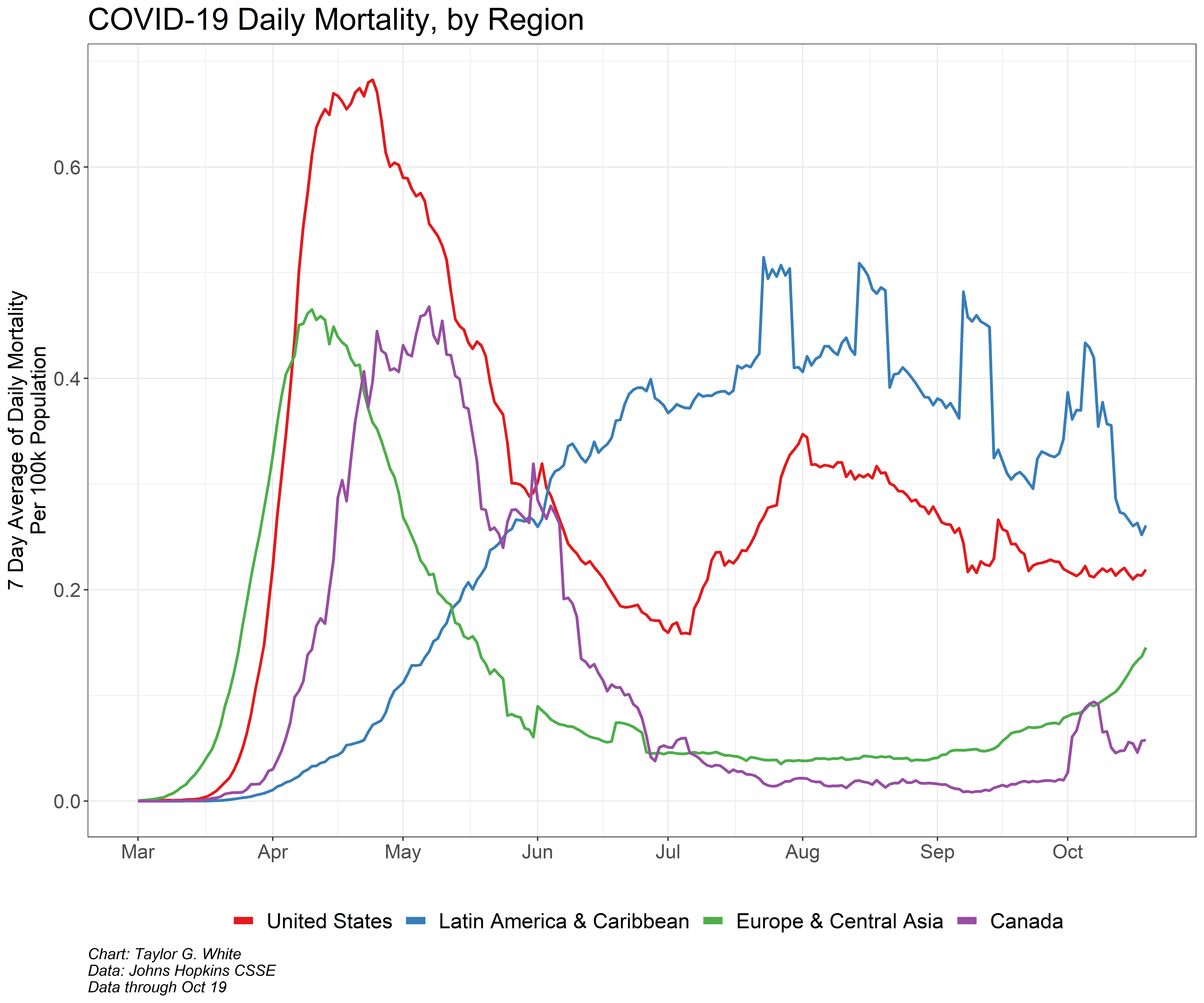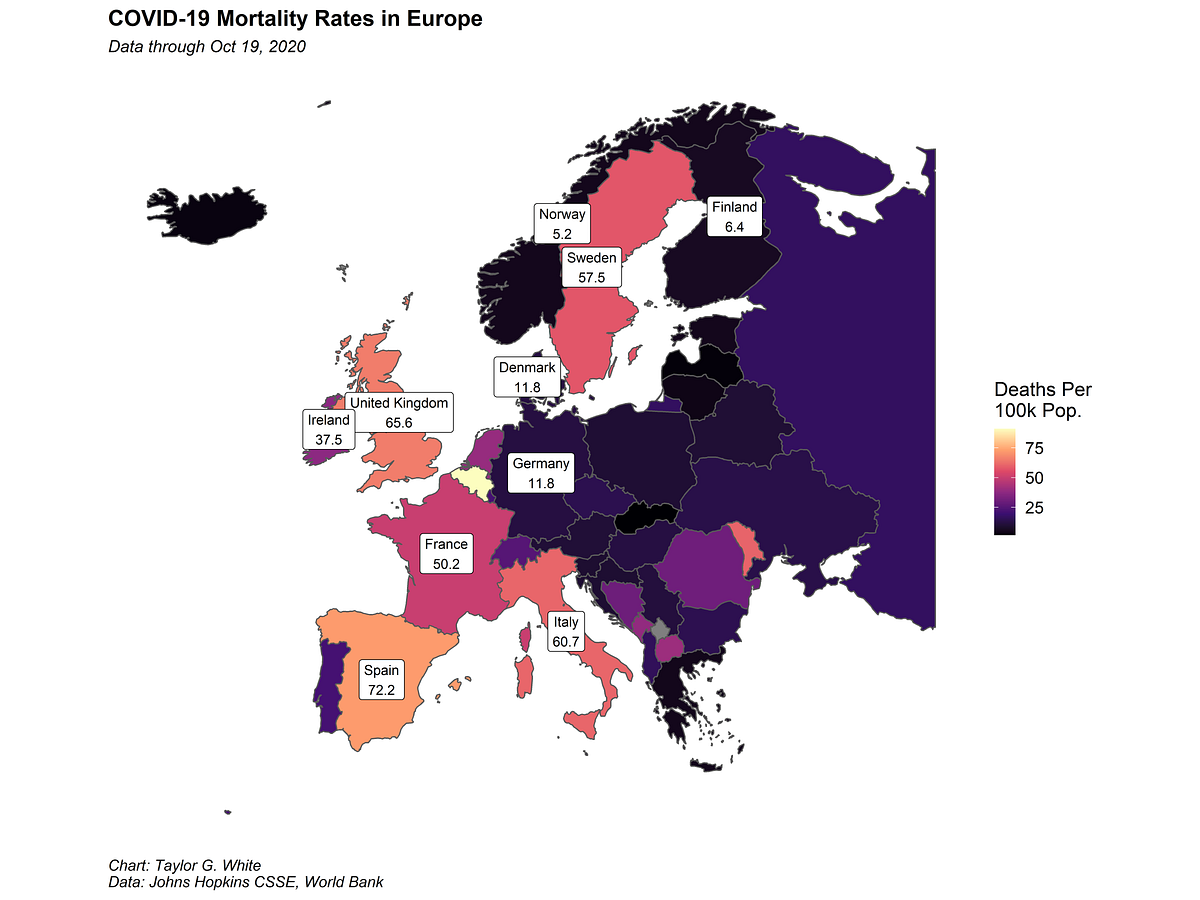Here in the U.S., we are seven months into the COVID-19 pandemic and two weeks out from the presidential election. We now have plenty of data to take stock and evaluate how countries have performed in combating the virus. The U.S. has employed a haphazard response to the pandemic, with no clear national plan and inconsistent strategies used by state and local leaders. This lack of leadership has led to a weak economy and incredibly high death rates.
The chart below shows a high-level timeline of the pandemic to-date. Europe had the first significant outbreak with peak mortality occurring April 10, with the U.S. peak occurring two weeks later on April 24 and Canada, another two weeks later on May 7. Latin America experienced its peak much later in the summer. After a terrible initial outbreak, the pandemic largely subsided in both Europe and Canada. However, the U.S. charted a different course.

Instead of stopping the spread of the virus, many U.S. states chose to keep their economies open. Political leaders downplayed the risks of the virus and encouraged people to live life uninterrupted. The result is that mortality in the U.S. stayed much higher than in other wealthy countries, with a curve that resembles the poorer Latin American region. The U.S. GDP per capita is four times higher than even the wealthiest Latin American country — we should have had the resources to fight this virus.
COVID skeptics saw efforts to slow the spread of the virus as fundamentally misguided. They said the virus is just like the flu (it’s not), and even if it is deadly, the economy is more important than saving lives. Critics of governors that chose to fight the virus loved to point out how Sweden was a shining example of a country that did little to combat the virus, and yet people still seemed to be enjoying themselves. The numbers show that lax approaches have not worked.
The chart below illustrates COVID-19 mortality rates, along with the economic impact of COVID for thirty of the wealthiest countries. The economic impact is the difference between the projected economic growth for 2020 and what would have likely occurred without COVID. The International Monetary Fund projects that the U.S. economy will suffer 22% less than the median country, but our mortality rate is 457% higher than the median. This mortality/growth trade-off is unfavorable to say the least, especially since a quarter of these countries have both lower mortality and better economic outcomes. The U.S. could have saved over 170,000 lives by achieving just the median mortality rate, which would have required earlier action and better coordination.
#economics #data-science #politics #covid19
